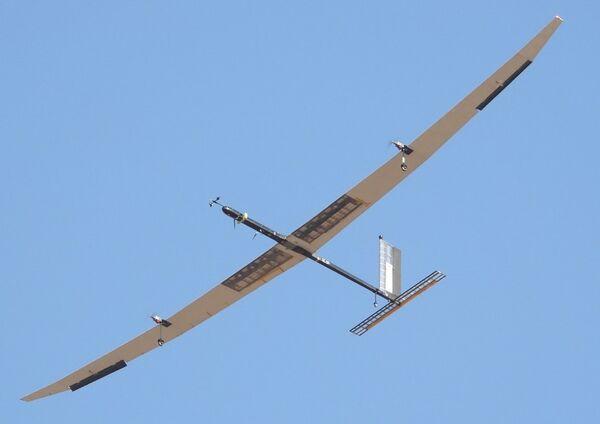
The CSIR-NAL HAPS subscale model can stay airborne for 24 hours. (CSIR-NAL)
India's Council of Scientific and Industrial Research – National Aerospace Laboratories (CSIR-NAL) has carried out a series of flight tests on a subscale model of its high-altitude pseudo satellite (HAPS) platform.
The tests were conducted at the Defence Research and Development Organisation's (DRDO's) Aeronautical Test Range (ATR) at Challakere, Karnataka, from 23 January to 2 February. During the tests, the subscale model, which has a wingspan of 12 m and a maximum take-off weight of 22 kg, conducted about 22 sorties and accumulated close to 37 flight hours.
Speaking to Janes, L Venkatakrishnan, NAL's chief scientist and high-altitude platform programme director, said, “The aircraft met or exceeded all the performance metrics set out for it including a flight endurance of more than 8 hours 30 minutes, reaching an altitude of almost 3 km above mean sea level.” Venkatakrishnan added that metrics including climb rate, maximum bank angle, turn radius, and one engine inoperative were also assessed in the flight tests.
In undertaking the tests, NAL has achieved a deliverable under its HAPS project to “demonstrate a Reynolds number [which indicates the ratio of inertial forces to viscous forces] equivalent flight at an altitude of 3 km”, Venkatakrishnan said.
The tested HAPS model was equipped with the payloads and flight systems required on a full-scale platform. It was also fitted with a pair of cameras (forward looking and on the tail) to observe in-flight performance. Fitted with high-performance solar photovoltaic cells, a battery system – and a payload of 1 kg – the subscale model can reach a 24-hour endurance flight, making it useful for low-altitude missions, Venkatakrishnan said.
Looking to read the full article?
Gain unlimited access to Janes news and more...







